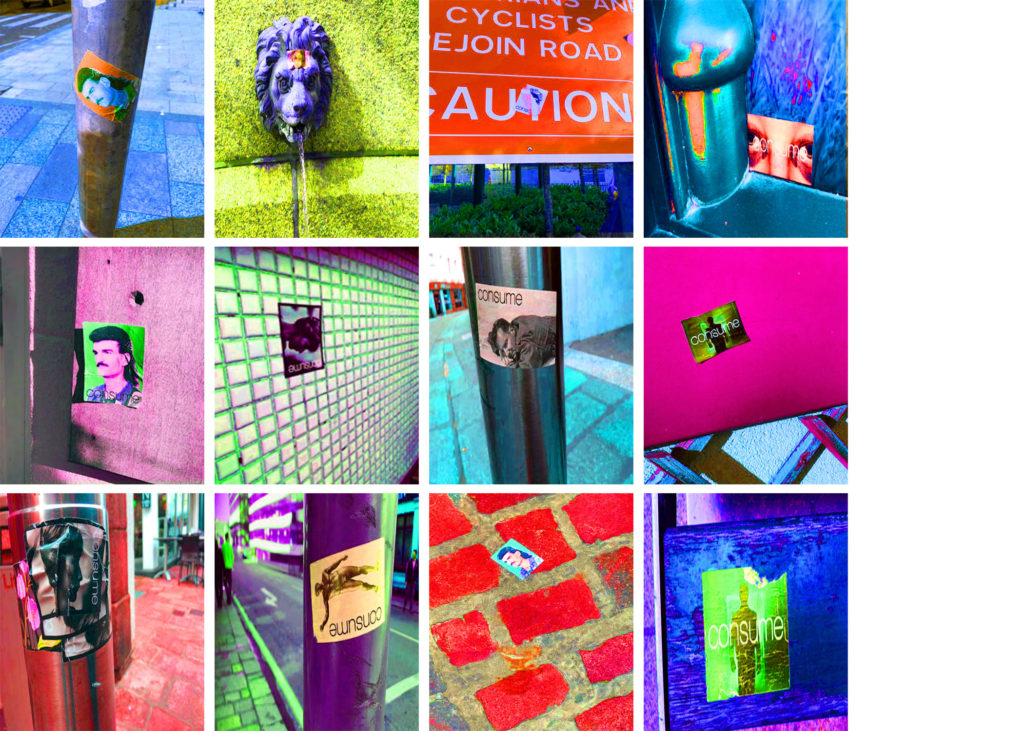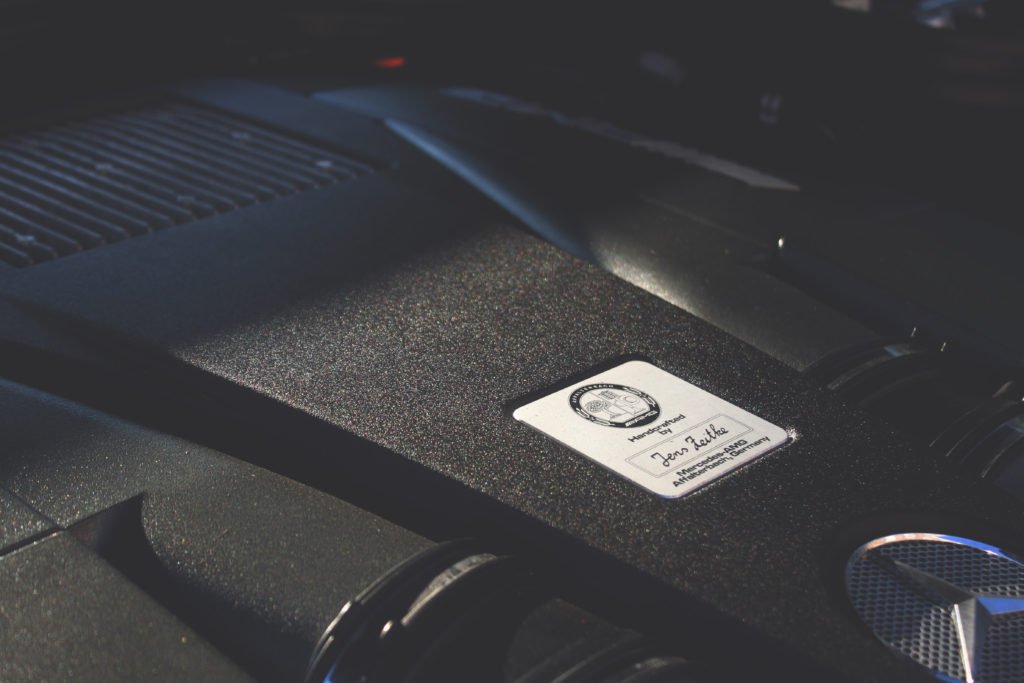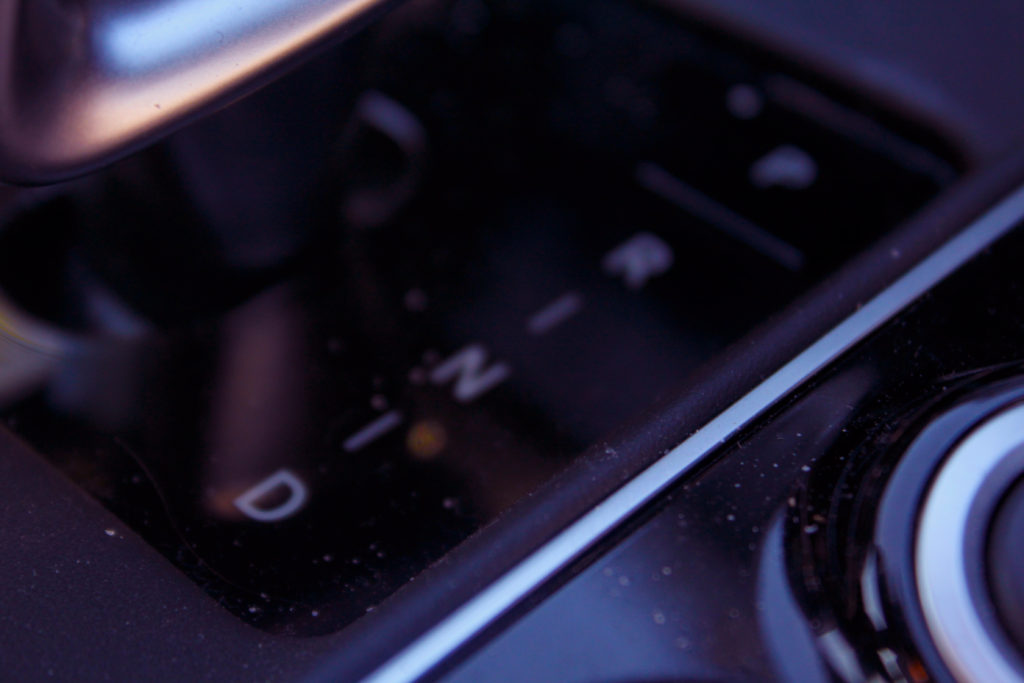I devised a plan for a shorter and slightly less developed photo-shoot based on following the journey of advertisement for a brand. I came to notice a range of stickers placed around the centre of town, and decided to document the stickers, as they all came from the same source (the same brand). I found that in doing so, I was able to record a story of the town, following the journey around town by following the stickers. As a 4th, admittedly less developed photo-shoot, I decided to include these images in order to act as a mini-project, as it links to the “Journeys & Pathways” brief by showing the pathway marked out across town by these stickers, which led me myself on a journey around town. In this way, this photo-shoot had a more personal touch to it, and due to the fact it was taken in a natural, uncontrolled environment, the variety of these images is broad:
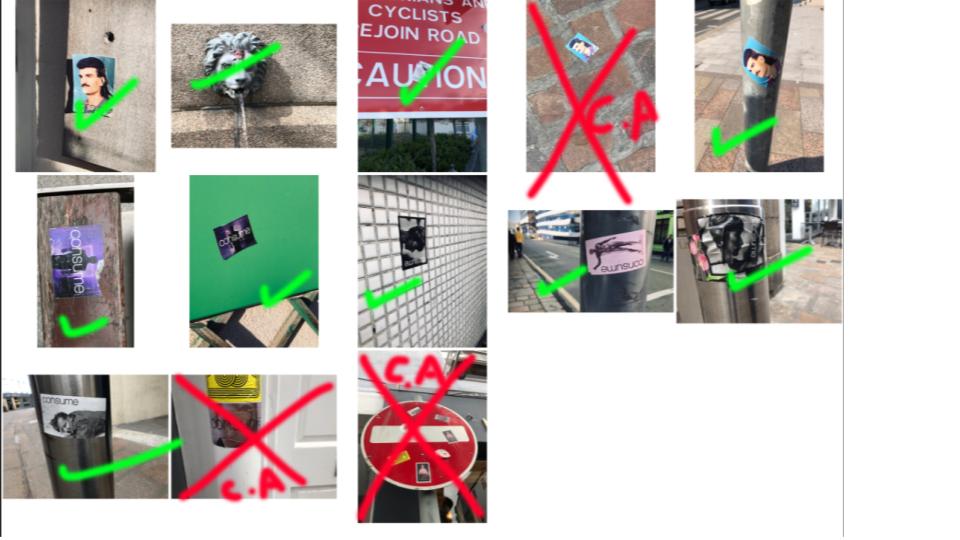
After deciding which images I would be using in the final edit (I had to decide on 12 in order to make the 4×3 final montage), I used photo-shop to edit together the images, and finalize the piece:
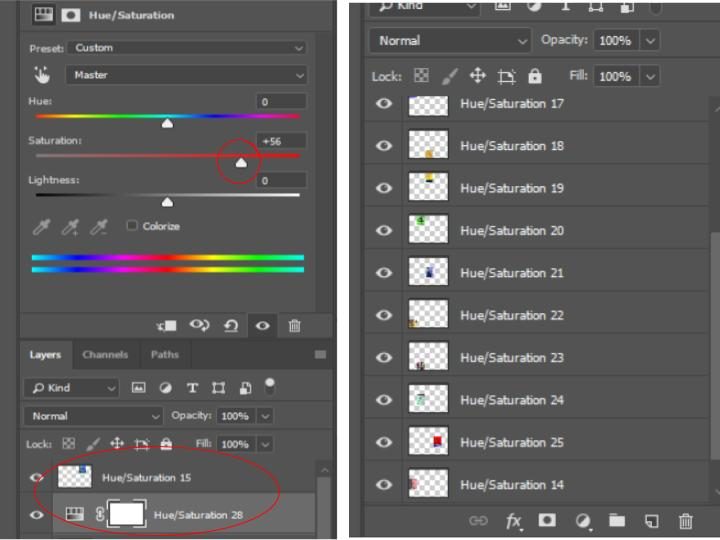
In order to make the final image, I adjusted the hue and saturation of each of the images in order to make the colors extremely bold. I did this as a way to show continuity through each of the images presented (as they now all have the same colour scheme and style) and also used it as a way to draw maximum attention to the image, and allowing each individual image to stand out on its own, due to its individual overall hue. The final image is seen below:
